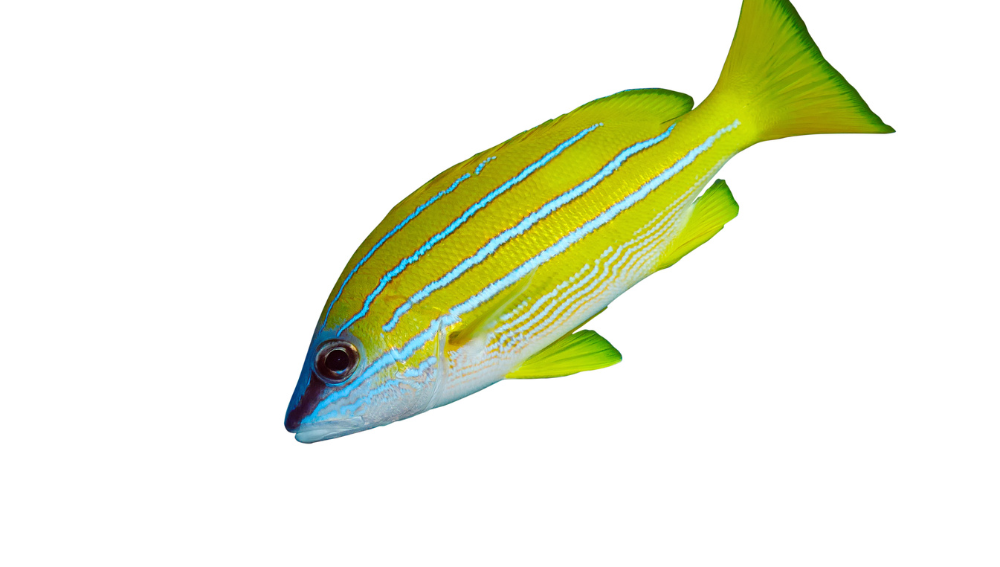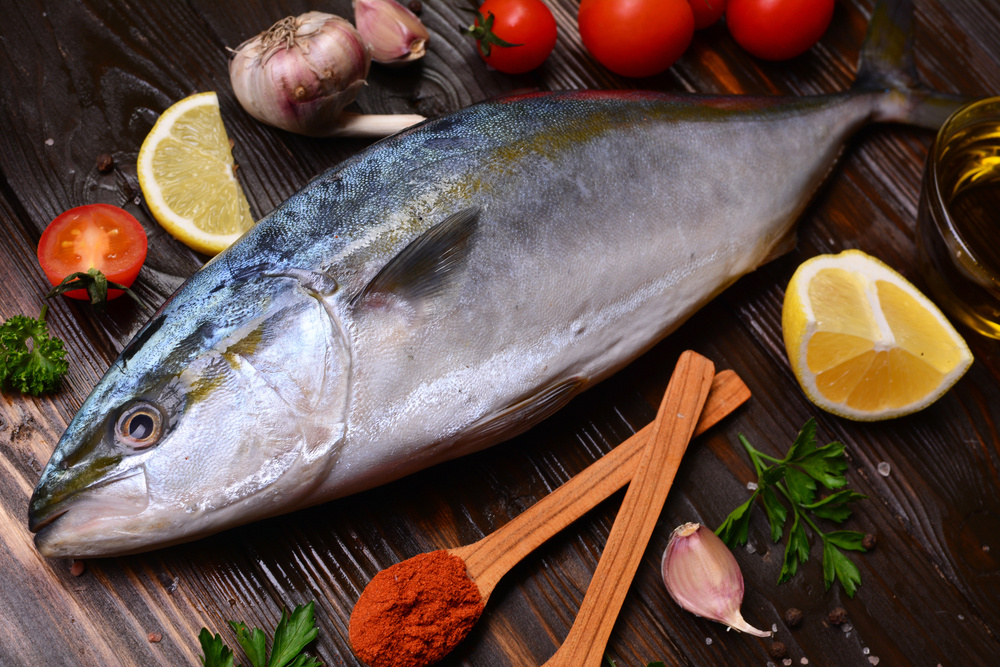Snapper, a popular fish known for its versatility, delicious taste, and tender texture, is a favorite among seafood lovers. Typically found in the Gulf of Mexico, snapper is a go-to choice when it comes to getting that ocean-fresh flavor on your plate.
However, there may be instances when you cannot find snapper or simply want to try something new. In these cases, knowing the best snapper substitutes is important for those moments when you need to satisfy your seafood cravings.
Understanding the flavor and texture profile of snapper is vital when trying to find the perfect substitute. Snapper has a mildly sweet taste with a delicate, silky texture that can easily be replicated with other fish varieties.
This article discusses various snapper substitutes that can give you a similar experience in terms of taste, texture, and cooking methods, ensuring that you don’t miss out on a delicious seafood dish even without having snapper in your kitchen.
Key Takeaways
- Explore suitable replacements for snapper with similar flavors and textures
- Learn about the characteristics of various fish to find the perfect substitute
- Discover different ways to cook and enhance your snapper substitute for delicious seafood dishes
Identifying Snapper Qualities

When exploring potential substitutes for snapper in various dishes, it is essential to first understand the distinct qualities of snapper itself.
This comprehensive guide will help in identifying the key attributes of snapper to ease your search for the perfect alternative.
Snapper possesses a mild and sweet flavor, which makes it popular in an assortment of dishes. The fish’s relatively low-fat content allows for its natural flavors to shine through without being overshadowed by excessive oiliness.
Therefore, any suitable substitute should mirror these taste characteristics to maintain the integrity of the original recipe.
The aroma of snapper is subtle but pleasant, contributing to its overall culinary appeal. Fish with overpowering odors may alter the dish’s profile, so select a substitute with a similarly light and fresh scent.
Texture plays a crucial role in the snapper dining experience. Snapper boasts a delicate, flaky texture that readily absorbs accompanying flavors and seasonings.
When cooked, the meat retains a conditional firmness that holds up well against various cooking techniques. To achieve a similar outcome, the substitute fish should exhibit comparable flakiness and structural integrity.
Thickness is another key attribute of snapper that influences the cooking method and overall dish presentation.
Snapper fillets are moderately thick and are well suited for baking or pan-frying. Opting for a substitute with similar dimensions ensures uniform cooking and a familiar appearance on the plate.
Snapper serves as the starring ingredient in numerous recipes, ranging from baked snapper and grilled dishes to intricate seafood feasts featuring red snapper.
By acknowledging the primary features of snapper ─ notably, its flavor, aroma, texture, and thickness ─ you can identify a suitable replacement that will complement your cooking and satisfy your taste buds.
Selection of Snapper Substitutes
When looking for alternatives to snapper, there are several options to consider, as these fish share similarities in taste, texture, and cooking qualities.
The following options can serve as excellent snapper substitutes, offering a variety of flavors and characteristics to suit different recipes.
Tilapia is a popular choice for a snapper substitute due to its mild flavor and firm texture. It is both versatile and affordable, making it an ideal option for various dishes.
Grouper and sea bass are two other fish varieties to consider as substitutes. Both have a slightly stronger flavor compared to snapper, but their firm, flaky texture makes them excellent choices for grilling or baking.
Cod and haddock are white, lean fish with tender flesh that can be used as replacements for snapper in most recipes. They offer a mild, delicate flavor that pairs well with a range of seasonings.
For a more unique option, consider mahi-mahi or trout as snapper substitutes. Mahi-mahi has a richer taste and firm texture, suitable for grilling or pan-searing.
Trout, on the other hand, offers a more delicate flavor and texture, making it ideal for baking or poaching.
When it comes to texture, halibut and flounder are two fish varieties with a firmer, denser flesh that can closely mimic snapper’s characteristics.
For a more budget-friendly option, catfish can be a viable snapper substitute. Its mild flavor and flaky texture make it suitable for many recipes, though it may be a bit softer than snapper.
Rockfish is another lesser-known option to consider. Its firm, flaky texture and mild flavor make it an excellent stand-in for snapper, particularly in dishes that feature bold flavors.
Lastly, for those interested in exploring more exotic options, queen snapper and tuna can provide a unique twist to traditional snapper recipes.
Queen snapper offers a similar taste, while tuna brings a distinct, slightly stronger flavor and firmer texture, perfect for those looking to experiment with new tastes.
By exploring these diverse options, one can find the perfect snapper substitute to satisfy personal preferences and recipe requirements, ensuring a delicious and satisfying meal.
Understanding Fish Flavors and Textures

Selecting a snapper substitute starts with understanding the flavors and textures of different fish species. Fish flavors can vary significantly and play a crucial role in creating a satisfying seafood dish.
Among the key factors that influence the taste and texture of fish are their habitat, diet, and if they are saltwater or freshwater fish.
Snapper, a saltwater fish, boasts a mild, sweet taste with a firm and flaky texture. To ensure a successful snapper substitute, similar flavor and texture profiles should be considered. Seafood enthusiasts may turn to other saltwater fish such as grouper, mahi-mahi, haddock, and sea bass as potential substitutes.
Freshwater fish options can include tilapia or catfish, but they may have a slightly different flavor. When choosing a substitute, it’s essential to select one that compliments the intended dish and doesn’t alter its outcome significantly.
Seasonings also play a vital role in bringing out and enhancing the natural flavors of fish. Classic flavor enhancers consist of lemon, garlic, herbs, and spices.
Lemon can add a burst of tanginess that pairs well with fish, while garlic provides a rich and savory zing.
Incorporating fresh herbs like parsley, dill, or cilantro can offer an earthy and aromatic touch.
Spices such as paprika, cumin, and black pepper can add depth and warmth to your fish recipe. These seasoning options work well with various fish types, including snapper substitutes.
When it comes to selecting a substitute, it’s important to keep in mind that some fish species might have slightly stronger or milder flavors.
Adjusting the seasonings accordingly can help minimize the differences and result in a pleasing and harmonious dish.
Ultimately, choosing the best substitute for snapper comes down to personal taste, availability, and the intended recipe.
By understanding fish flavors, textures, and how seasonings impact the final dish, one can confidently select a fitting snapper alternative to enjoy a delightful seafood experience.
Delicious Snapper Substitutes and How to Cook Them
Sea Bass and Codfish
Sea bass and codfish are excellent substitutes for red snapper due to their similar firm texture and mild flavor. Sea bass has a slightly buttery taste, whereas codfish has a clean, mild taste.
Both can be cooked using various methods such as frying, baking, grilling, steaming, pan-searing, broiling, roasting, or deep-frying. To ensure the best flavor, avoid overcooking these fish.
Halibut and Grouper
Halibut and grouper are other popular red snapper substitutes, appreciated for their firm, flaky texture and delicate flavor. Both fish types are suitable for a wide range of cooking techniques, including:
- Frying: Coat the fillets in batter or breadcrumbs and shallow-fry until golden brown.
- Baking: Lay the seasoned fillets on a baking tray and bake at 350°F (180°C) for 12-15 minutes, or until cooked through.
- Grilling: Brush the fish with oil and grill on medium heat for about 4-5 minutes per side.
Mahi Mahi and Trout
Mahi Mahi, also known as dorado, and trout are also excellent substitutes for red snapper. These fish boast a somewhat firmer texture than snapper and impart a mildly sweet taste.
Mahi and trout are very versatile in preparation, lending themselves well to techniques such as grilling, steaming, pan-searing, roasting, and deep-frying.
Catfish and Flounder
Catfish and flounder, while less firm than red snapper, can still serve as suitable substitutes. Their flavors are distinct, yet mild enough to work well with a variety of cooking methods. Popular techniques include:
- Frying: Dredge the fillets in seasoned flour and pan-fry in oil for 3-4 minutes on each side.
- Baking: Drizzle flounder fillets with oil and season with salt and pepper. Bake at 400°F (200°C) for 10-12 minutes.
- Braising: For catfish, sear the fillets in a hot pan, then add broth and aromatics, and simmer gently until tender.
Using these snapper substitutes and suggested cooking techniques, you can create delectable dishes that will delight your taste buds and satisfy your craving for red snapper.
Bringing Out the Best in Your Substitute

Lemon Juice and Lime Juice
Using lemon juice and lime juice is a great way to complement the flavors of many snapper substitutes. These acidic ingredients can help to cut through the oily characteristics of some alternative fish species, while also enhancing their natural flavors.
A simple squeeze of lemon or lime can provide an instant boost to the overall taste of your seafood dishes.
Fresh Herbs and Spices
Incorporating fresh herbs and spices into your cooking is an excellent way to bring out the best in your snapper substitute. Seasoning your fish with a mix of fresh herbs like parsley, cilantro, or dill can elevate its flavor and make it more reminiscent of snappers.
Spices like paprika and cayenne pepper add depth and warmth to your seafood dishes, while complementing the omega-3 fatty acids present in many snapper substitutes.
Cooking Temperature and Time
Paying attention to the cooking temperature and timing is fundamental when preparing a snapper substitute. Most fish, including snapper alternatives, need to be cooked at a relatively high temperature to lock in moisture and achieve a desirable texture.
Overcooking your fish can result in a dry, unappetizing dish. As a guideline, aim for a cooking temperature of around 375°F (190°C) for 10 to 15 minutes, or until the fish flakes easily with a fork.
Keep in mind that the cooking time may vary depending on the thickness of your fish fillet.
Freshly cooked snapper substitute can be paired with a range of side dishes such as coleslaw or roasted vegetables, inviting diners to explore a variety of international cuisines while enjoying the many health benefits associated with fish consumption.
Conclusion

In summary, choosing the right snapper substitute can make a significant difference in preparing exceptional seafood dishes.
A knowledgeable fishmonger can assist in selecting the most suitable alternatives based on factors like taste, texture, and cooking methods.
Some notable snapper substitutes include grouper, mahi-mahi, and sea bream. Grouper stands out for its firm, mild flavor, providing an excellent option for grilling or baking.
Mahi-mahi, on the other hand, offers a tender texture and moderate taste, making it versatile for various dishes.
Lastly, sea bream exhibits a delicate and mild flavor, perfect for recipes that require a more refined taste profile.
In conclusion, finding the right snapper substitute significantly depends on individual preferences and availability. Always consult a trusted fishmonger for guidance on selecting the best option to suit specific recipe requirements.
With this in mind, exploring snapper alternatives can lead to exciting culinary adventures and enhanced seafood dishes.
Frequently Asked Questions
What fish can replace red snapper in recipes?
Several fish can replace red snapper in recipes, such as grouper, vermilion snapper, and Mahi-Mahi. These fish share a similar flavor profile and texture, making them suitable substitutes that can easily adapt to most recipes that call for red snapper.
Which fish has a similar taste and texture to snapper?
Fish with a similar taste and texture to snapper include grouper, vermilion snapper, and barramundi. These fish have a mild, slightly sweet flavor and a firm texture, comparable to that of red snapper.
They can be used interchangeably in recipes without significantly altering the dish’s taste.
Is there a snapper substitute that’s more environmentally friendly?
Yes, a more environmentally friendly substitute for red snapper is barramundi. Barramundi is a sustainable fish, often farm-raised with responsible practices.
It has a similar flavor and texture to snapper and can be used as an alternative in recipes, promoting eco-friendly seafood choices.
What is the best snapper alternative for grilling?
The best snapper alternative for grilling is grouper. Grouper has a firm texture and mild flavor, allowing it to hold up well to grilling.
Additionally, the fillets are thicker than snapper, which helps them retain moisture throughout the grilling process, resulting in a juicy and flavorful dish.
Which white fish can be a good snapper substitute?
White fish such as halibut, cod, and haddock can also be good snapper substitutes. While they have slightly different flavor profiles, their mild taste and firm texture make them versatile options for replacing snapper in a variety of dishes.
What’s the most economical alternative to red snapper?
Tilapia is often the most economical alternative to red snapper. It’s a widely available, low-cost fish with a mild flavor and slightly flaky texture.
When prepared correctly, tilapia can be a good substitute for snapper in various recipes, offering a budget-friendly option for home cooks.







